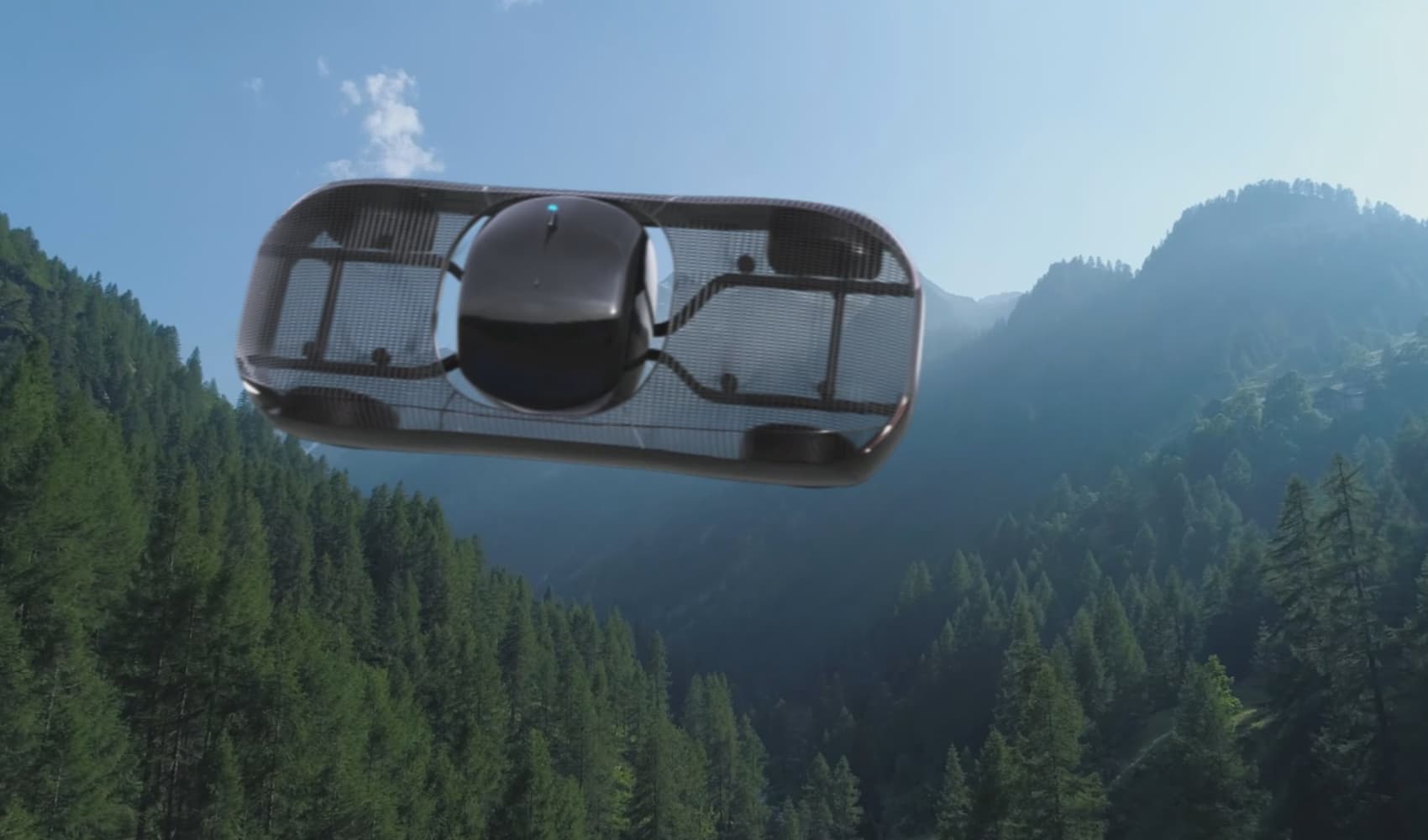
- Robots are emerging as entertainers during the pandemic worldwide.
- Sales of entertainment robots were up 13% to 4.6 million units in 2019, and had a potential growth of 10% to 5.1 million units in 2020 and 6.7 million units in 2023, according to the International Federation of Robotics.
- One country making great strides in this nascent market is Japan, where a 25-ton collossus Gundam robot enthralls fans at the port in Yokohama.
When Boston Dynamics posted its latest video of its robots performing gravity-defying acrobatics, this time dancing to The Contours' "Do You Love Me," the internet was agog. A YouTube clip of Atlas and Spot robots moving with balletic fluidity has racked up over 23 million views since Dec. 30 and countless warnings that the 'Terminator series' Skynet is upon us. Boston Dynamics, which Hyundai Motor Group is acquiring from SoftBank Group, makes robots that are not only practical, they're fun to watch.
Long used by companies like Walt Disney Imagineering, robots are emerging as entertainers even as the Covid-19 pandemic has seen the rollout of various kinds of robots that can help fight the virus and support society and the economy in a myriad of ways – from providing automation in factories and warehouses to working as medical assistants in hospitals and nursing homes. As the world looks to vaccines and the reopening of economies, intelligent machines will be taking on an increasingly public role as entertainers. Entertainment robots as a market could grow 10% annually through 2023 as more public venues embrace machines that do not tire, get sick or need to be quarantined, according to the International Federation of Robotics (IFR).
The IFR classifies entertainment robots as a kind of service robot, a broad category including everything from hospital delivery droids to edutainment robotic toys. The category grew 32% from $8.5 billion to $11.2 billion in 2019. Sales of entertainment robots were up 13% to 4.6 million units in 2019, and had a potential growth of 10% to 5.1 million units in 2020 and 6.7 million units in 2023, according to the IFR.
Robots popular in Japan
One country making great strides in this nascent market is Japan, known for its prowess in robotics. In 2018, Japan was the world's top industrial robot manufacturer and delivered 52% of the global supply, according to the IFR. Japan has actively embraced robotics as its population shrinks, its workforce shrinks and the coronavirus pandemic makes human interaction difficult.
Companies in Japan recently unveiled a giant robot that can move its arms and legs, appearing to walk. Nearly 60 feet tall, about half the height of the copper Statue of Liberty, the machine is inspired by the Gundam science fiction series and is drawing fans in Japan and on the internet.
Money Report
Just south of Tokyo, Gundam Factory Yokohama recently opened as the culmination of a long-term project to build a life-sized, mobile version of the titular robot from Mobile Suit Gundam. Yoshiyuki Tomino's wildly successful anime franchise spawned a merchandise empire now worth some 78 billion yen ($758 million) in annual sales. The series is a sprawling science fiction epic in which people pilot giant robots in a space war. While other likenesses of Gundam robots have been erected since 2009, the one in Yokohama is the fruit of the Gundam Global Challenge (GGC), an effort to create a full-scale giant robot that can walk.
When it's showtime, the Gundam robot seems to slowly step forward, bend its knees and then stand up on what looks like a launchpad for a rocket. Bathed in mist and dramatic lighting, it raises its arms as stirring music fills the air. The 25-ton colossus seems set to take off into the twilight over the port city, but it never leaves its supportive gantry. The entire setup is a highly elaborate sound and light show to produce the illusion that the Gundam robot has, in a sense, come to life. And that's good enough for legions of fans that will pay 1,650 yen ($16) to see it from ground level or 3,300 yen ($32) for gantry access.
"The sight of the 18-meter giant walking was a surprise I had never experienced in my life," says a Gundam fan who goes by the nickname Yokkun and requested anonymity. "It's as if you're a crewmember on the [Gundam spaceship] White Base. You won't get bored no matter how many times you see it. Going up the tower for a closeup view is a must."
"No one has ever seen an 18-meter standing Gundam statue moving like this before, and I think that's very important," says Yasuo Miyakawa, representative director of GGC and CEO of Bandai Namco, which has sold nearly 700 million Gundam model kits in the decades since the series debuted in 1979. "Showing what has been created in the anime — that is, the world seen in the videos — is closer to reality is a new form of entertainment."
In a message to fans, director Tomino apologized that the enormous machine cannot actually walk due to its great bulk. Nonetheless, fans have come to see the "moving Gundam," take photos, have a bite at the on-site café and of course buy merchandise in the souvenir shop, which even sells model kits of the Yokohama Gundam and its gantry. A showroom details how nine Japanese companies came together to build the robot, including contractor Kawada Group, which assembled the gantry, industrial robot maker Yaskawa Electric, which did to the motors and control devices, and engineering firm Nabtesco, which provided the reduction gears to make the Gundam move.
Serving up food, drinks and laughs
Robots as a draw for diners and tourists are catching on in Asia. Built in 2012 by the Morishita Group at a reported cost of some 10 billion yen ($125 million), Tokyo's Robot Restaurant was regularly packed with tourists and locals who came to see performers cavorting with robotic dinosaurs, LED-lit tanks and other contraptions in a 90-minute, sensory-overload cabaret.
While the coronavirus forced the temporary closure of Robot Restaurant, other businesses are also mobilizing droids despite and even because of the pandemic. Last summer, a subsidiary of property developer Country Garden Holdings opened a restaurant complex in China's Guangdong Province that's operated by 20 robots, some with colorful designs and cartoonish faces. Aside from the novelty factor of being served by machines, the facility minimizes human contact and possible infections. In addition, the robots can prepare meals such as hot pot and noodle dishes from a menu of hundreds of selections in as little as 20 seconds. The company bills the 21,500 square foot complex, with capacity for nearly 600 people, as the first of its kind in the world, and announced plans to expand by producing about 5,000 restaurant robots annually.
In 2019, developers unveiled Gyeongnam Masan Robot Land in South Korea, marketed as the first robot theme park of its kind. Costing some $700 million, Robot Land took 10 years to build and features 22 rides, 11 other facilities, R&D and convention centers and about 250 robots doing everything from assembly line work to synchronized dances.

Robots are also entertaining people in much smaller venues. Toy-like gadgets like Sony's Aibo robot dog have been winning fans for decades, while SoftBank Robotics' pintsized humanoid robot NAO, used in the RoboCup international soccer tournament's Standard Platform League, also does stand-up comedy. Launched during the pandemic, Moxie is a $1,499 tabletop robot from California startup Embodied that's designed to help children aged 5 to 10 develop their social skills through fun interaction. Backed by investors such as Amazon, Intel, Sony and Toyota, Embodied is led by Paolo Pirjanian, who said in a Toyota AI Ventures blog post: "With Moxie, children can engage in meaningful play, every day, with content informed by the best practices in child development and early childhood education."

Major industrial robot makers are also embracing entertainment robots. Germany's KUKA produces industrial robot arms that help assemble cars, trains, solar panels and other vehicles and infrastructure. But it has also been working with partners like Milanese drinks company Makr Shakr to create a fully automated cocktail bar called Toni. Its two robot arms grab drinks ingredients embedded in the ceiling, shake and stir before placing the finished cocktail on the bar counter. Billed as the world's first mass-market robot bar, Toni can serve up to 80 drinks an hour. Industrial robots can also be used for more hands-on experiences.
"Our portfolio includes robot-based amusement rides," says spokesperson Teresa Fischer, pointing to the KUKA Coaster, which can twirl people around in midair. "Here, KUKA offers special robots that have been developed specifically for carrying passengers. They combine the options of action-packed entertainment with the high requirements on safety when working with people. In this way, a wide variety of different rides can be implemented and customized, for example in leisure and theme parks."
Joanne Pransky, a California-based robotics expert who helped KUKA launch the Coaster, notes that many people already spend more time talking to a device than other humans. She sees huge potential for robots as entertainers.
"Worldwide, the acceptance and use of robotics has especially catapulted as a result of Covid and the lack of available humans," says Pransky, who also bills herself as the world's first robotics psychiatrist. "The public's increased acceptance of robots, coupled with the exponential technological increase of robots' capabilities, will result in societies growing accustomed to having robots entertain them, which will further drive the robotic entertainment market."






